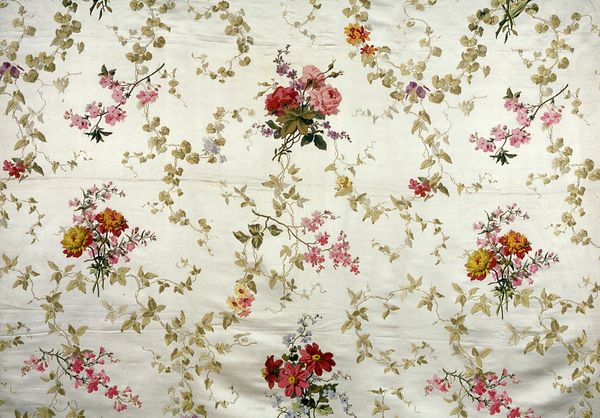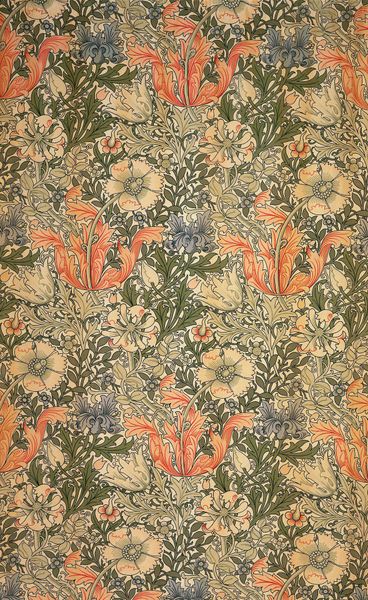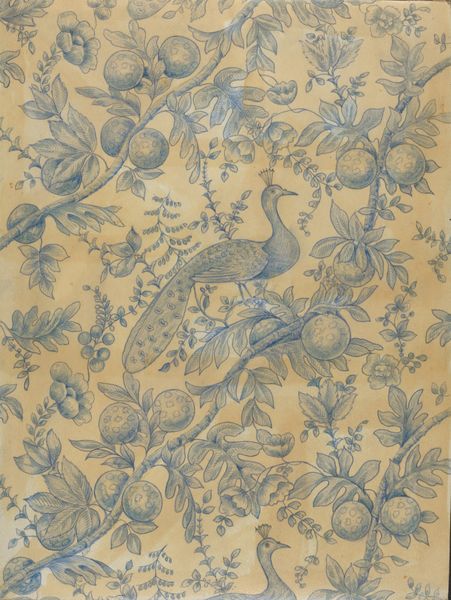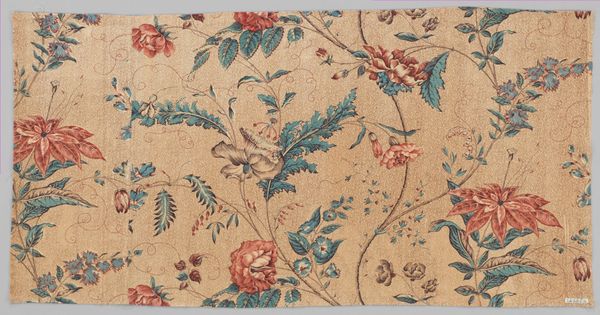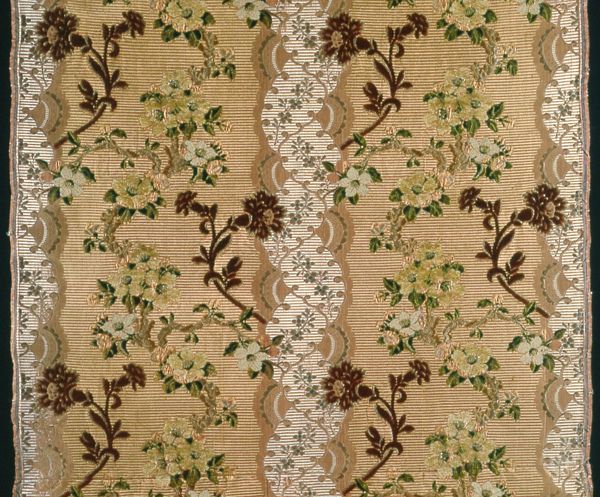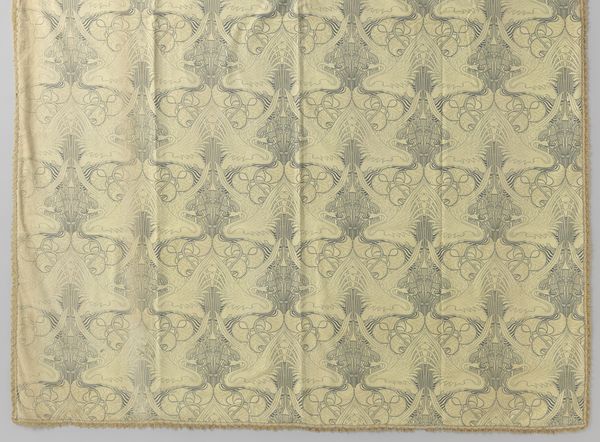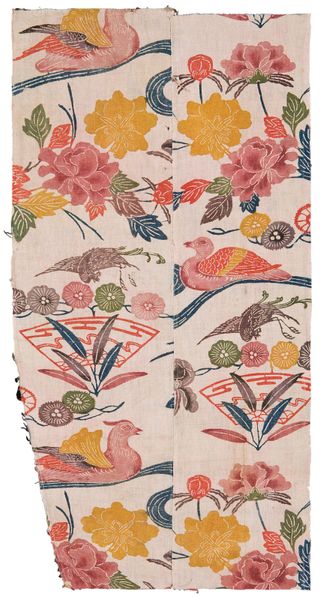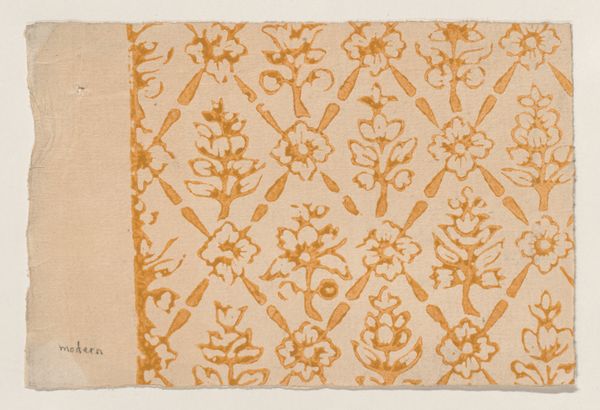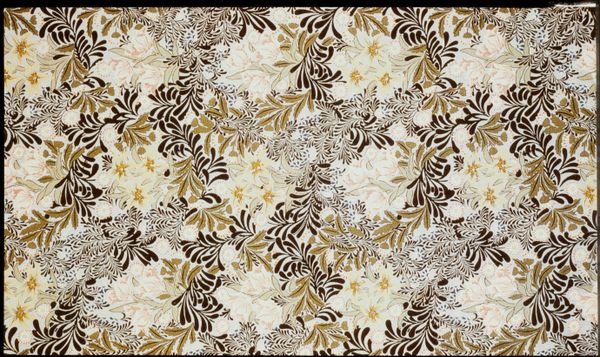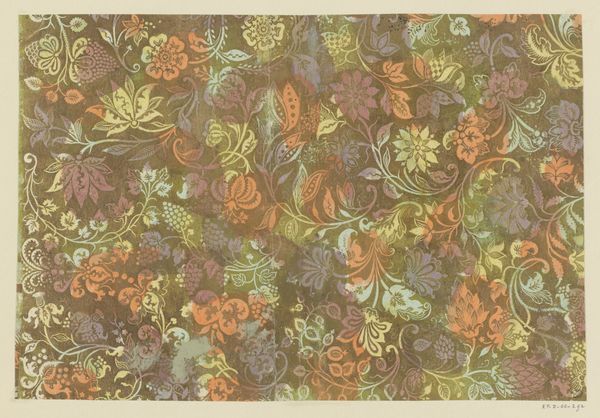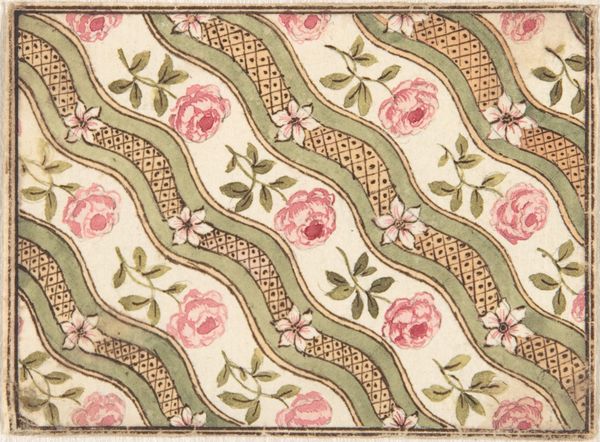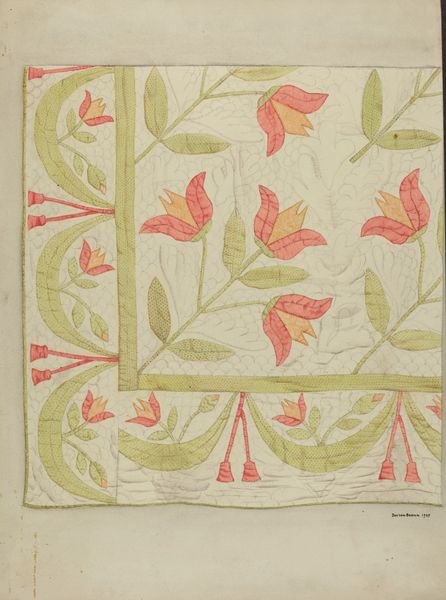
print, weaving, textile
#
organic
# print
#
arts-&-crafts-movement
#
weaving
#
textile
#
organic pattern
#
decorative-art
Dimensions: 152.4 × 60.4 cm (60 × 23 3/4 in.) Repeat: 58.5 × 29.5 cm (23 1/8 × 11 5/8 in.)
Copyright: Public Domain
Curator: It is an intriguing pattern; however, it's equally important to understand what constitutes this "artwork" before exploring its impact. What do you think is conveyed by this pattern printed on this particular textile, during its time? Editor: We are looking at a dress fabric panel from approximately 1880, crafted by Charles Frederick Worth, housed at The Art Institute of Chicago. It looks like it utilizes both weaving and printing on textile. Initially, the gentle repeating pattern of leaves and berries gives a tranquil, almost soothing effect. I'm curious, though, what can this fabric panel reveal about its era and maker? Curator: Given its origin during the late 19th century, what do you think about Worth choosing to produce dress fabric alongside his high-fashion designs? The materiality speaks volumes. He wasn't just designing; he was engaging in the very *production* of fashionable materials. Consider how his work challenges this era’s strict separations between fine art and craft? Editor: So, the fact that a renowned designer like Worth dedicated his time to textile production…it blurs those conventional art hierarchies, right? Instead of solely focusing on unique, one-off creations, he's also immersed in mass-producing *something*. Curator: Precisely! Worth wasn't just creating exclusive garments; he was also shaping the broader *consumption* of design, making aesthetics accessible, even reproducible. This democratizing effect, through the materials themselves, had societal ramifications. Consider too, the labor involved in weaving and printing: where was it sourced? Who were the artisans? These questions help to unravel a fuller picture. What considerations are highlighted by the method in which such “textile” art are experienced as commodities? Editor: Thinking about the labor…it prompts questions about industrialization, the lives of the workers, and the whole economic structure tied to the manufacturing process of such art and consumption during that period. Curator: Exactly! It prompts us to think beyond just the pretty pattern and examine the networks of production, labor, and consumption that underpin this artwork. Worth was creating art and also producing items for consumption, shaping broader culture through materiality. Editor: This fabric panel isn’t just about its decorative beauty; it represents so much more. By understanding Worth’s intentions to be both artist and manufacturer during a period when the Industrial revolution started reaching full speeds, one can see an attempt to challenge traditional notions, of both “art” and consumer goods.
Comments
No comments
Be the first to comment and join the conversation on the ultimate creative platform.
